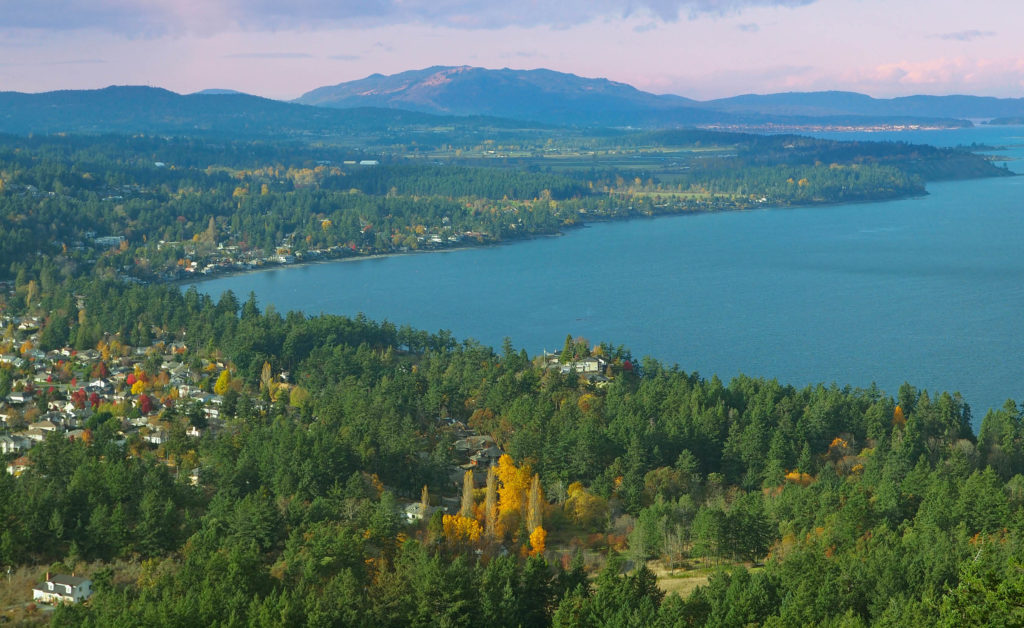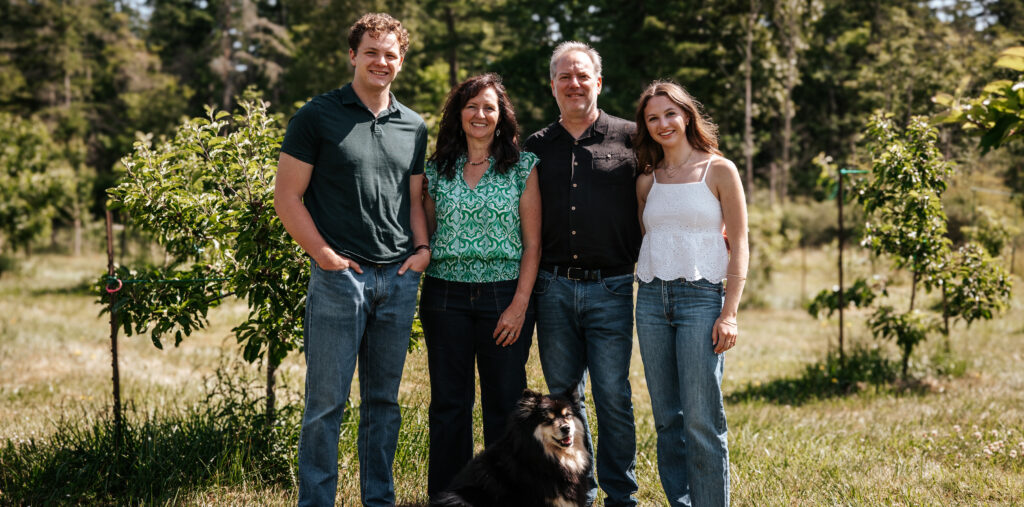by Doreen Marion Gee –
The foundation of our community is built on the contributions of many different ethnic groups that have inhabited these lands for millennia. Their diversity of cultures and traditions sculptured this beautiful place we call home.
Long before European explorers arrived here, Indigenous Peoples had already established homes, villages and communities, enjoying a bountiful life from the fruits of land and sea.
Eric Pelkey, Community Engagement Coordinator for the W̱SÁNEĆ Leadership Council, provided an Indigenous perspective on the history of the Saanich Peninsula: “I will go back as far as our oral history was passed on to me personally. About 10,000 years ago, XAALS, the Creator, came down to our people. He told our people they must build huge canoes from the largest cedar trees they could find. They must build ropes hundreds of feet long. They did this using the inner bark of those giant cedar trees. Then, one day, thunder and lighting warned us of heavy rains and rising water. Our people who had heeded the words of XAALS took to canoes with their prepared belongings. They watched the water rise and the land disappear. The last view of land was the top of our Sacred Mountain ȽAWELNEW̱, otherwise known as Mt. Newton, the highest point on the Saanich Peninsula. Our people tied their canoes with their long cedar ropes to the giant arbutus trees that still existed at the very top of ȽAWELNEW̱. They then watched that land disappear. The only thing holding them in place was their long cedar ropes.
“They stayed there many days until one day a Raven, with a cedar branch in its beak, flew down and landed on the Chief’s canoe. He said ‘this is a sign, the land is going to come back.’ Then the water started to recede. As the land slowly stared to reappear, XAALS, the Creator, came down to our people and waved his hand over the emerging land and said ‘This is W̱SÁNEĆ, the emerging land, and you are the W̱SÁNEĆ Nation, the emerging people.'”
Eric explains how The Great Flood was verified to him by an archaeologist in 1990, on Salt Spring Island. “I was called out there that year because soil erosion had caused the earth to cave onto a beach fronting our reserve land in Fulford Harbour. In that debris was a very old skeleton of a man. We had brought the archaeologist with us to verify the age of the remains and that it was one person. She later confirmed the skeleton was 5,000 years old as were the implements, tools and beadwork buried with him. The archaeologist told me that she had been working throughout the Gulf Islands and Southern Vancouver Island and kept finding evidence of a huge flood that engulfed the entire area about 10,000 years ago. She asked me if I had ever heard of this, whereupon I told her this part of our oral history. She was dumbfounded. She said she went to school her whole life on the Saanich Peninsula, went to UVic and then on to Simon Fraser University, and she had never heard this before. I told her ‘it’s because it’s all part of the history of our people that the colonizers want to withhold from the general public.’ Eric’s story shows how physical evidence backs up the oral history he has learned.
In the mid-1800s, Saanich was one of many safe havens in B.C. for people persecuted in their native country. A commemorative plaque on East Saanich Road states, in part: “In 1858, nearly 800 free Blacks left the oppressive racial conditions of San Francisco for a new life on Vancouver Island … these pioneers enriched the political, religious and economic life of the colony.” Many of them settled on the Saanich Peninsula.
People from Asia have also contributed their energy and cultural wisdom to our community. In his book, The Story of Sidney, Peter Grant refers to the “enormous role of Asian workers in the (historical) life of Sidney, whether on farms, in the sawmill or in commercial fishing.”
The diverse and colourful roots of this community keep it strong and resilient in the face of constant change.





I have a fascibaytuon with the First Nations having lived amondt the Haida and different tribes throughout Saskatchewan’ and Haida Gwaii; embracing their culture and belefs ever since coming to Canada in 1955.: as well as having a son who mysteriously has the gift of native carving. Doreen has done a wonderful job on her writings and research into teaching us of the history of indiguous tribes which deserve raves and kudos for her time into such in depth and interesting material.